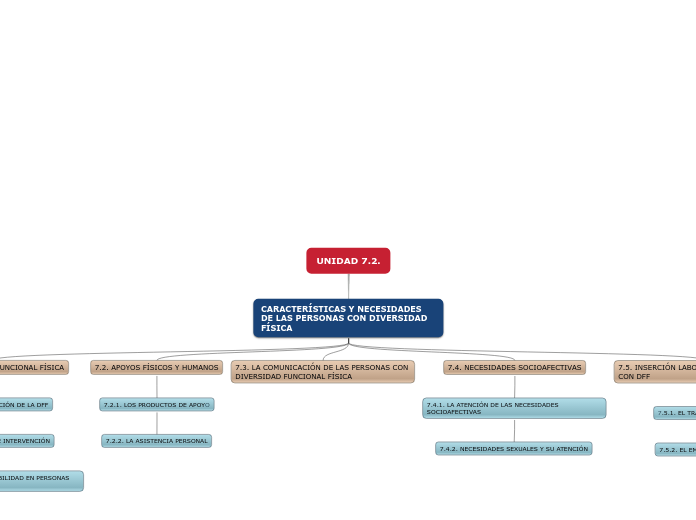作者:Monica Garcia Campos 4 年以前
216
UNIDAD 7.2.
Las personas con diversidad funcional física requieren una serie de apoyos tanto físicos como humanos para mejorar su calidad de vida y garantizar su plena inclusión en la sociedad.

作者:Monica Garcia Campos 4 年以前
216

更多类似内容
Type in the name of the multiple-perspectives text.
Example: Bridge to Terabithia by Katherine Paterson
Identify an important issue from the text that is being presented from different angles. Type it in.
Example: Jesse's drawing talent.
7.5.2. EL EMPLEO PROTEGIDO
Decide on the fourth point of view
Type in the name of the last character whose perspective on the issue you are going to present.
Example: Leslie Burke, Jesse's new next-door neighbor, and best friend.
Point of view
Type in a relevant quote that highlights the character's point of view. Try to follow a citation format: author's name, chapter, and page.
Example: I can't get the poetry of the trees,' he said. She nodded. Don't worry,' she said. You will someday. He believed her.' (Paterson, 4. 24)
7.4.2. NECESIDADES SEXUALES Y SU ATENCIÓN
How is the viewpoint introduced in the story?
Choose an answer:
Whose character does the third point of view belong to?
Type in his/her name.
Example: Mr. Aarons, Jesse's father.
Decide on the second point of view
Name the character (it can either be the main character or one of the supporting characters) whose point of view you are presenting.
Example: Miss Edmunds, Jesse's music teacher.
Type in a quote that points out the character's position about the issue.
Try to follow a citation format: author's name, chapter, and page.
Example: 'She said he was unusually talented, and she hoped he wouldn't let anything discourage him.' (Paterson, 2. 8)
7.2.2. LA ASISTENCIA PERSONAL
How is the viewpoint introduced in the story?
Choose an answer:
Decide on the first point of view you are going to present.
Type in the name of the character (it can either be the main character or one of the supporting characters) whose point of view belongs to.
Example: Jesse Oliver Aarons, Jr., the main character of the novel, a fifth-grader living in a rural Southern area.
Type in a relevant quote that highlights the character's point of view towards
CARACTERÍSTICAS Y NECESIDADES DE LAS PERSONAS CON DIVERSIDAD FÍSICA.
Try following a citation format: author's name, chapter, and page.
Example: 'Jesse drew the way some people drank whiskey. (...) Lord, he loved to draw. (...) When he was in first grade, he told his father that he wanted to be an artist when he grew up.' (Paterson, 2. 7)
7.1.2. PRINCIPIOS DE INTERVENCIÓN
What type of narration introduces the viewpoint?
Choose an answer:
7.1.3. BARRERAS A LA ACCESIBILIDAD EN PERSONAS CON DFF